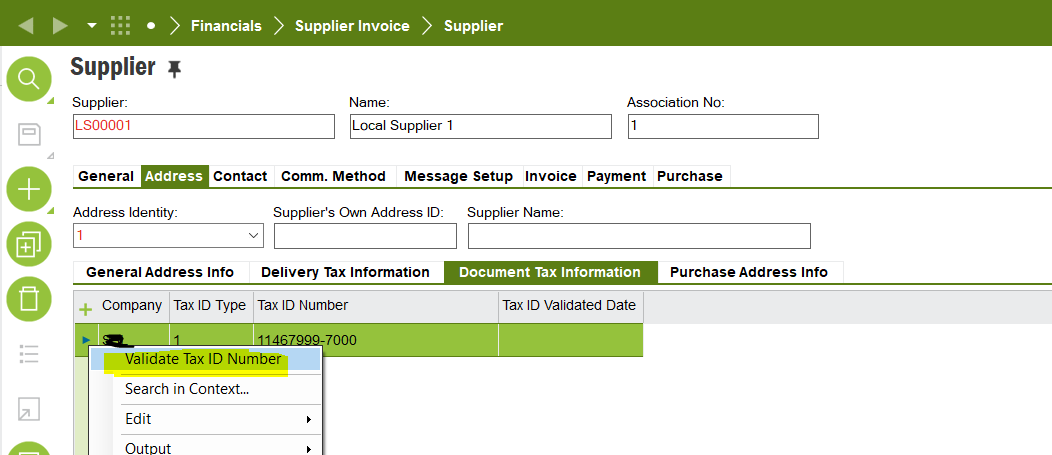Hello everyone,
I just start working with IFS and kindly ask you to help with an info. Where should I enter the VAT Code for an EU company in order to have the VAT code included in the Tax Transactions report?
Thank you
Madalina
 +1
+1Hello everyone,
I just start working with IFS and kindly ask you to help with an info. Where should I enter the VAT Code for an EU company in order to have the VAT code included in the Tax Transactions report?
Thank you
Madalina
Best answer by Narmada
Hi
If you are referring to tax ID number, it is available in the customer/ Suppler window. Refer below screen preview.

Best Regards
Narmada
Enter your E-mail address. We'll send you an e-mail with instructions to reset your password.